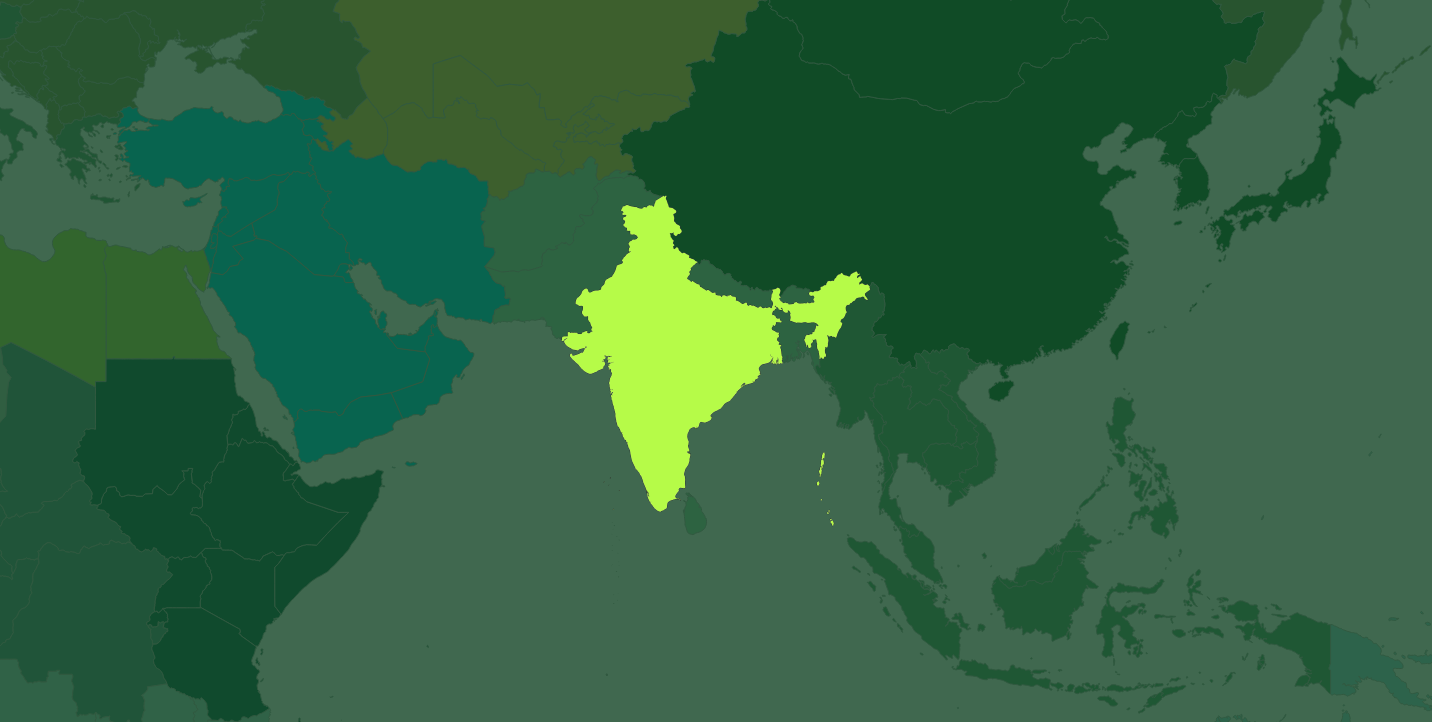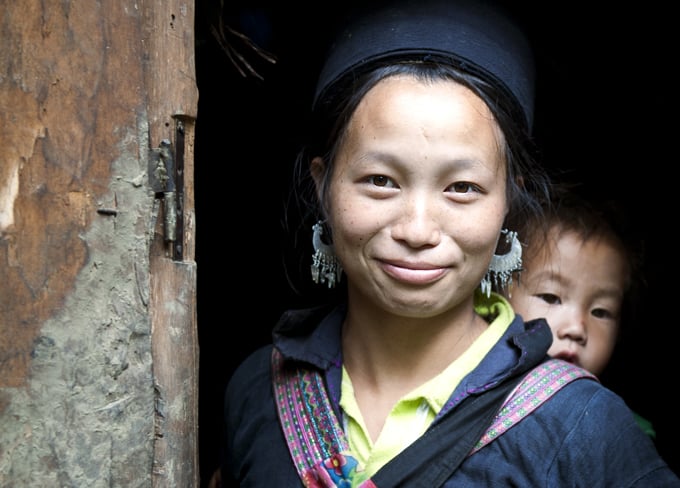Dalits in India
-
Profile
The term Dalit means ‘oppressed’, ‘broken’ or ‘crushed’ to the extent of losing original identity. However, this name has been adopted by the people otherwise referred to as Harijans, or ‘Untouchables’, and has come to symbolize for them a movement for change and for the eradication of the centuries-old oppression under the caste system. In legal and constitutional terms, Dalits are known in India as scheduled castes. There are currently some 166.6 million Dalits in India. The Constitution requires the government to define a list or schedule of the lowest castes in need of compensatory programmes. These scheduled castes include converts to Sikhism but exclude converts to Christianity and Islam; the groups that are excluded and continue to be treated as ‘untouchables’ probably constitute another 2 per cent of the population.
Historical context
The roots of Dalit oppression go back to the origins of the caste system in Hindu religion. The philosophy of caste is contained in the Manusmriti, a sacred Hindu text dating from the second century BCE. ‘Untouchable’ outcast communities were forbidden to join in the religious and social life of the community and were confined to menial tasks that were viewed as polluting, such as animal slaughter and leatherworking.
The introduction of Islam to India from about the thirteenth century CE led to widespread conversions by many low-caste and ‘untouchable’ groups, and by the mid-nineteenth century about one quarter of the population was Muslim.
During the struggle for Indian independence two different approaches emerged for the improvement of the situation of the people now known as Dalits. The first was led by Mahatma Gandhi, who believed in raising the status of Dalit people (or, as he preferred to call them, Harijans) while retaining elements of the traditional caste system but removing the degrading stigma and manifestations of ‘untouchability’. The other approach was led by Dr Ambedkar, a lawyer and himself an ‘untouchable’, who believed that only by destroying the caste system could ‘untouchability’ be destroyed. Ambedkar became the chief spokesperson for those ‘untouchables’ who demanded separate legal and constitutional recognition similar in status to that accorded to Muslims, Sikhs and Christians. However, this was opposed by Gandhi and Ambedkar eventually gave up the demand. After rejecting Hindu values, in 1956 he converted to Buddhism and was later followed by a large number of converts.
After independence, the Indian Constitution abolished ‘untouchability’ in law. Today Dalit politics largely centres around the just dispensation of the affirmative action benefits (in employment, education and electoral representation) granted to them under the Constitution. However, the Protection of Civil Rights Act 1955/1976 and the Scheduled Caste and Scheduled Tribes (Prevention of Atrocities) Act 1989, both derived from the Constitution, remain largely ineffective in their implementation. Many reasons lie behind this, including a lack of political will on the part of both central and state governments, a lack of commitment of upper-caste and class bureaucrats to social justice, the absence of broad-based rights groups to monitor the implementation process, and a lack of statutory power on the part of the Scheduled Caste/Scheduled Tribe Commission (Mandal Commission) to directly punish the perpetrators of crimes against Dalits. Affirmative government action, with regard to Dalits, is all directed at amelioration of their economic status, without liberating them from the dehumanizing effects of caste and ‘untouchability’. Caste and poverty are inseparably joined together and are at the root of the Dalit socioeconomic predicament.
A telling example of the social exclusion that Dalits suffer even in the face of a large-scale natural disaster was witnessed in the immediate aftermath of the 26 December 2004 Tsunami. The Tsunami brought a substantial amount of devastation for the Dalits of the southern Indian state of Tamil Nadu. It is estimated that well over 10,000 died while 650,000 were displaced. In the aftermath of the Tsunami, the Dalits of Tamil Nadu were made to suffer from worst forms of discrimination and humiliation. Dalits were excluded from making use of (and in some cases even entering into) makeshift relief camps; the ‘untouchablity’ syndrome dominated Hindu upper–caste mentality even at this time of natural catastrophe. The limited shelter that was provided to Dalits was close to what are regarded as less desirable areas, for example near graveyards or garbage dumps lacking in proper sanitation or other facilities. In these shelters there was no regular supply of water. After the Tsunami, several international agencies donated large portable water-tanks for the general consumption of all those who were affected by the Tsunami. In several instances, Dalits were prevented from drawing water from these taps, because of the fears of upper–caste Hindus of the ‘pollution’ of water at the hands of Dalits.
Politically Dalits have not been able to break into mainstream debates and discussions despite the system of reservations that works at both national and state levels. The main reason for this has been the co-option of the Dalit agenda into that of the mainstream political parties, which are usually led by upper-caste men, with a consequent neglect of the primary demands of Dalits. The rise of the Bahujan Samaj Party (BSP) has for the first time given Dalits a vehicle for bringing Dalit issues into the wider political arena. The success of this party in the northern states especially has given rise to hopes that the old upper-caste domination of Indian politics may finally be on the verge of giving way.
Current issues
The constitutionally guaranteed affirmative action policies have had some positive impact in increasing the representation of Dalits in educational institutions, governmental jobs and elected positions. Notwithstanding this improvement, Dalits continue to remain the most underprivileged class of Indian society: the stigma they face remains evident to this day. Dalits in general continue to survive under inhumane, degrading conditions.
Around 80 per cent of Dalits live in rural areas. Economic exploitation remains their most acute problem. They are almost all marginal farmers or landless labourers. Many are in debt and are obliged to work off their debts as bonded labourers, despite the fact that this practice was abolished by law in 1976. In these cases, a labourer takes a loan from a landlord or moneylender and in return agrees to work for that person until the debt has been repaid. In practice such debts are difficult to repay as interest rates are high and poverty forces the labourer into deeper debt. The debt can then be passed on to the next generation, and it is almost impossible to escape the cycle of bondage. In some areas many high-caste landlords pay their Dalit labourers minimum wages in cash or food, or nothing at all; resistance is frequently met by violence, sometimes resulting in the death or injury of the victim. Mob violence against Dalit communities is frequently reported, sometimes led by landlords, and has been especially noticeable in situations where Dalit workers have joined labour unions or made progress in gaining education and economic mobility.
Dalit women have been particularly badly affected in recent times. They are discriminated against not only because of their sex but also because of religious, social and cultural structures which have given them the lowest position in the social hierarchy. The stigma of ‘untouchability’ exposes them to an even higher risk of abuse and exploitation. For instance, while sexual violence is a problem faced by women across India, encouraged in part by the frequent failure of the judicial system to secure justice for its victims, the situation is especially challenging for Dalit girls and women due to the added discrimination they face: the International Dalit Solidarity Network (IDSN) reports that less than 2 per cent of rape cases against Dalit women result in convictions, compared to around 25 per cent against women in India generally.
In areas such as health, education, housing, employment and wages, application of legal rights, decision-making and political participation, and rural development, Dalit women have been almost entirely excluded from development policies and programmes. The national population policy, which is geared to population control and in the process targets Dalit and other women for family planning programmes, does so on the grounds that they are the cause of the population ‘explosion’ and of poverty. No change has been made in the attitudes of society towards these women and they continue to be oppressed, marginalized, violated and all but forgotten.
Large numbers migrate to cities or to labour-scarce rural areas in different parts of India. Many Dalit families have left rural areas to live in slums and on the pavements of the rapidly growing cities. Here they also tend to do the worst jobs for the lowest wages. However, in some cities traditional occupations such as sweepers have been organized in municipal unions and have the advantage of regular work and wages. Many Dalits work as casual day labourers in small factories, quarries, brick kilns or on construction sites, as cycle rickshaw drivers or in petty trade.
There are, however, growing numbers employed in relatively secure jobs in areas such as public service, banking and the railways, and sometimes in private industry. Those resident in the cities have some access to secondary and higher education, and a growing middle class has evolved within the Dalit community. As opportunities for education increase and aspirations rise, Dalits could become a strong and positive force for change in India in the coming decades, especially if they are able to organize themselves across barriers of language and religion.
Related content
Latest
-

20 March 2024
Navigating human rights challenges: India’s escalating concerns
At the 55th Session of the UN Human Rights Council, taking place on 20 March 2024, Glenn Payot addressed the Council on the escalating…
Minority stories
-

25 February 2016
Life at the Margins: The Challenges of Multiple Discrimination
Minorities and indigenous peoples, already marginalised, face further challenges on account of other aspects of their identity – their age, gender, livelihood, disabilities, sexuality or gender identity.
- East Africa
- Discrimination
- Minority stories
-
Our strategy
We work with ethnic, religious and linguistic minorities, and indigenous peoples to secure their rights and promote understanding between communities.
-
-